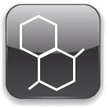Polyimide (PI)
Thermoplastics > Superpolymers
Polyimides PI, TPI | ||
The polyimides are polymers of high performance suitable for highly critical situations, combining heat resistance, self - lubricating properties, dimensional stability and resistance chimica. Mechanical strength, chemical and heat is so high that these materials often replace glass and metals such as steel in many industrial applications. Polyimides are also inherently resistant to combustion and usually need not be mixed with flame retardants. According to the composition of its main chain, can be polyimides;
Heterocyclic aromatic polyimides are the most used and, in turn, can be divided into:
| | |
| TPI Properties | ||
The TPI is a thermoplastic amorphous polymer that offers a combination of high strength and thermal stability of -270 ° C to + 300 ° C, l as normal operating temperatures is higher than 260 ° C. Low thermal conductivity, good impact resistance, high elastic modulus,excellent chemical resistance, including chlorinated solvents, does not require post-treatments. Furthermore, the resin is inherently flame retardant without the use of halogenated additives that can pose an environmental risk. An interesting feature of polyimides which makes them excellent for use in construction industries and automotirz. Thanks to the fact that is inherently flame retardant when an aromatic polyimide ignites a carbonaceous layer smothering the flame is formed, blocking the fuel to burn. Then this layer is removed and everything is as if he had never been a fire. The aromatic polyimides are, along with the aromatic polyamides, polymers of high thermal stability more used in advanced technologies. Like all the famiglia of the amide,It presents problems of water absorption and when the application is greater than 100, the vapor pressure of internal water can reach cracking the material. Therefore it is not advisable to use in the polyimide in high temperature applications in the presence of water. Therefore it is necessary to dry the material before processing. |  | |
| Polymerization | ||
Polyimides are those polymers in its structure have an imide group. In one molecule is a group having an imide structure. For polymerization, the product was volve a polyimide. These polymers generally come in two forms. There are two ways ; a linear form wherein the atoms of the imide group are part of the straight chain and the second form is a heterocyclic structure where the imide group is part of a cyclic unit in polymer chain. Pyromellitic dianhydride and 4,4' the-oxydianiline, or by condensation There are several methods for preparing polyimides, one is the condensation reaction between a dianhydride and a diamine, generalmentei the most used by the commercially are between a dianhydride and a diisocyanate. |  | |
| Processability | ||
Polyimides are not meltable polymer resist high temperatures, therefore ouede process by sintering, large amounts of finished parts can be produced using the process of direct formation ( Direct Forming). Used mechanical or hydraulic presses generally automatic high speed to compact the powder in the mold cavities and then sintered for several hours at high temperatures without oxygen. | ||
Aplications | ||
SuIts application fields are among the most diverse including: the aerospace industry, where they are used as structural materials and coatings high thermal stability; coatings electrical and electronic applications, materials for applications in nuclear power stations due to their high radiation resistance, high temperature semipermeable membranes and many more. The aromatic polyimides are practically insoluble compounds in organic solvents and therefore very difficult to process. To obtain solutions of polyamic acid fibers thermally ciclodeshidrata while the fiber is maintained in tension are spun. Polycyclic aromatic polyimides are strong and reistentes heat and chemical reagents. They may be substitutes for glass and steel vajillas microwave. Car parts that have to withstand high heat, corrosive, or shock compbustibles (bumper), c ompositos, adhesives, insulators, and as fire fighting clothing fibers and fabrics, protection and cable insulation. |  | |
